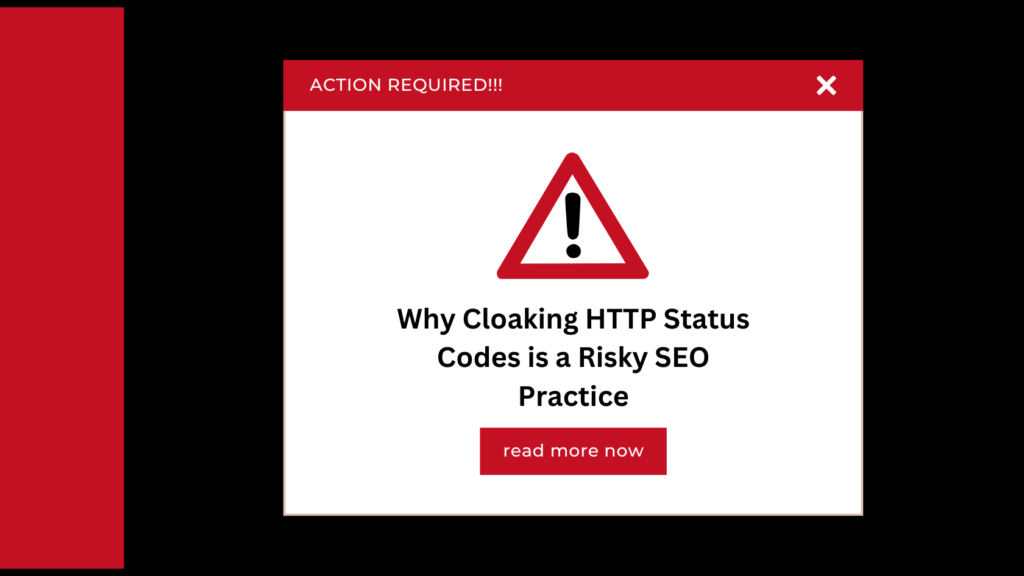As a website owner, it’s important to understand the risks associated with cloaking HTTP status codes, as well as Google’s stance on the matter. By prioritizing ethical SEO practices and transparency, you can improve your website’s credibility and avoid potential penalties.
Table of Contents
ToggleWhat is Cloaking and Why is it Risky?
Cloaking refers to the practice of giving search engines, such as Google, a different HTTP status code from the one served to human visitors. This black hat SEO technique is used to manipulate search engine rankings by showing one version of a page to crawlers and another version to human visitors.
This practice is risky because it goes against Google’s webmaster guidelines, which can lead to potential issues such as the site getting de-indexed from Google. Furthermore, it’s considered a direct violation of ethical SEO practices, and when done intentionally, it’s seen as an attempt to deceive search engine crawlers.
Google’s Position on Cloaking
During Google’s April 2023 SEO Office Hours, a website owner asked Gary Illyes, Analyst at Google, whether cloaking HTTP status codes is acceptable. In response, Illyes strongly advised against it, stating that it’s risky and could lead to potential issues.
Instead of cloaking, Illyes recommends using a “noindex” robots meta tag to remove specific pages from Google Search. This approach is more straightforward and safer than setting up potentially problematic serving conditions.
The Importance of Ethical SEO Practices
As an SEO and copywriting professional, it’s crucial to prioritize transparency and ethical SEO practices. By doing so, you can avoid penalties and maintain the credibility of your website.
To that end, it’s important to avoid giving search engines and users different status codes. Cloaking can include showing search engines and people different content, meta tags, or design elements. It’s all against Google’s rules and can make your website look bad.
Instead, consider using a “noindex” robots meta tag to remove specific pages from Google Search. This is a safer way to remove pages from search results without violating Google’s guidelines.
Conclusion
In conclusion, cloaking HTTP status codes is a risky SEO practice that goes against Google’s webmaster guidelines. By prioritizing ethical SEO practices and transparency, you can improve your website’s credibility and avoid potential penalties. Stick to using a “noindex” robots meta tag to remove specific pages from Google Search, and avoid giving search engines and users different status codes. By doing so, you’ll have a competitive advantage and win the SERP, while also maintaining the trust and loyalty of your visitors. if you are looking for affordable seo services









